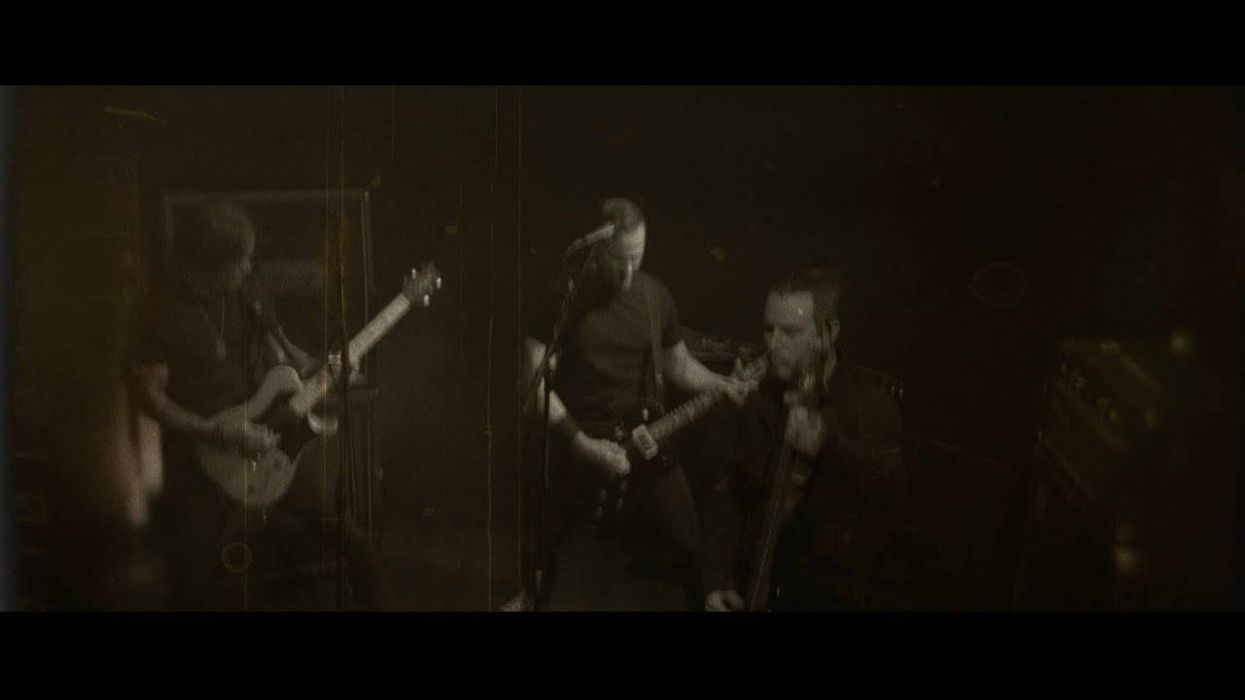This column was inspired by a fine April 2014 Premier Guitar article: “Deep 6: A Brief History of the Tragically Underused Electric Baritone Guitar” by Thomas V. Jones—better known as TV Jones, famed pickup maker and luthier. Tom’s right. Baritone is tragically underused. So let’s ameliorate the tragedy with an overview of ways to arrange and record with bari.
Here’s how Jones defines baritone guitar: “a long-scale guitar tuned below standard E tuning, but not as far down as a full octave. Most baritone scale lengths are between 26" and 30".”
My definition is looser: any fretted instrument that specializes in bridging the bass and guitar registers. That can include purpose-made baris like Jones describes, 6-string basses tuned E to E (the original tuning for Danelectro and Fender 6-string basses), and even standard-scale guitars cranked down to B or A. With the latter option, string gets floppy and intonation suffers. And sometimes that’s awesome.
Here’s an example on YouTube. I recorded all the guitar tracks on Tom Waits’ “Going Out West” with a vintage Telecaster tuned down to B, without even installing heavy strings. The intonation is abysmal! It’s a sour-sounding racket! And Waits wouldn’t have had it any other way. The amp was a blackface Super Reverb. I’d applied reverb and trem, but just before we rolled tape, Tom turned both controls up to 10.
The slippery slope. Baritone guitar’s musical uses are equally varied. On one end of the spectrum are low single-note parts that might double a standard bass, or simple single-note melodies near or below the bottom of the guitar register, like, say the iconic Bass VI melodies Glen Campbell played on his ’60s hits “Wichita Lineman” and “Galveston.” The Bass VI in Clip 1 is tuned from E to E as Leo intended. (As on nearly all baritone guitar recordings from the 1950s and ’60, the strings are flatwound.)
Thanks to the Bass VI’s extended 30"-scale, low notes are authoritative and higher notes are reasonably well-intonated. It’s a far cry from the loose, sloppy sound of the Waits track. But low-tuned standard-scale guitars don’t always sound so anarchic. I’ve had great luck recording with a Baldwin Virginian, a standard 25.5"-scale semi-acoustic that I snagged back in the ’90s for a mere $90 (Clip 2).
If the Bass VI resonates like steel bridge cables and the low-tuned Tele is like a clothesline flapping in the breeze, this is like … a tightrope, maybe? It’s reasonably in tune, and the shorter scale facilitates chordal/fingerstyle playing. I tune it A–E–A–D–F#–B—like dropped-D, but down a fourth.
Clip 1 and Clip 2 were both recorded guitar-style, with amp, reverb, and tremolo sounds. But there are other possibilities. Check out Clip 3, a quickie demo track featuring drums, bass, acoustic guitar, and electric guitar. There’s no bari—yet.
Let’s consider some ways you might incorporate bari here. In Clip 4, I double the original bass line in unison using the Bass VI—the same technique employed on many vintage Nashville recordings. The Fender certainly brings out the bass line, especially against the deep, dark-sounding Guild Starfire bass on the primary bass track. This time I recorded direct, straight into a preamp with no amp or effect simulation.
I don’t miss an amp sound here, though it would probably sound just as good with one. Still, I manipulated the track in the mix, filtering out a lot of low end on the bari so it wouldn’t muddy the sub-200 Hz frequencies. I also added plate reverb and panned the parts slightly in stereo. Conventional wisdom says bass tracks should be dry—a great principle to violate! Here, though, blending dry bass and wet bari creates a cool ambience while maintaining melodic clarity.
Clip 5 flips the equation. Here I double the electric guitar part an octave below using a 29.4"-scale Gretsch Spectra Sonic baritone, an instrument created by TV Jones himself. (Gretsch no longer produces these, though Jones sells them directly.) This creates a mutant 12-string effect.
The Spectra Sonic is a great “compromise” guitar. It has sufficient tension and scale length for classic baritone sounds, yet it’s relatively comfy for chordal and fingerstyle playing. I tune it A–E–A–D–F#–B, same as the Baldwin.
Did you know that Robert Smith used Bass VI on many, many Cure tracks? But he rarely doubles guitar or bass parts. Instead, he plays simple, stepwise countermelodies that weave around the vocals and other guitars. Sadly, Clip 6 sounds nothing like my beloved Cure, though the musical concept is similar. It’s the Baldwin again.This is far from a complete list of baritone guitar techniques. We didn’t even get into reinforcing distorted guitar riffs with extra low notes, a long-running metal/rock technique. But the real adventure happens when you discover your own techniques. You don’t even need a dedicated baritone guitar to experiment. Just install a set of heavy-gauge flatwounds on a standard-scale guitar and tune B to B. Or for a less traditional bari sound, just use your current strings. Intonation may become an unobtainable fantasy, but you’ll have good anarchic fun.

















